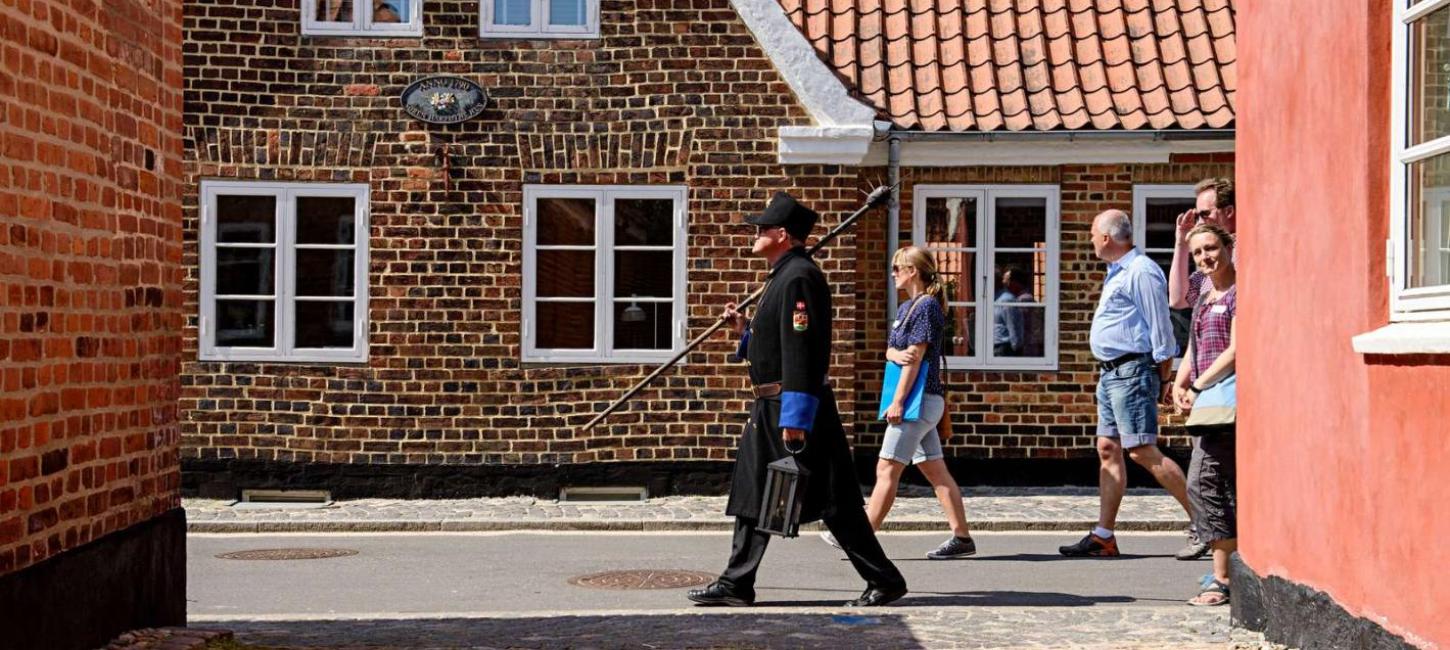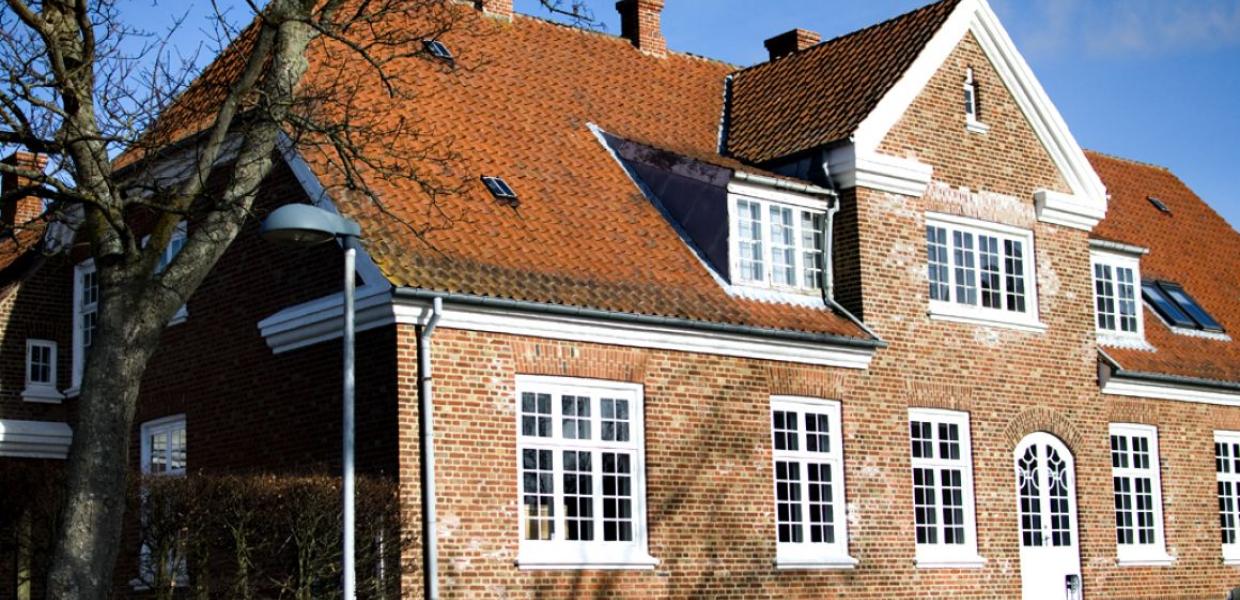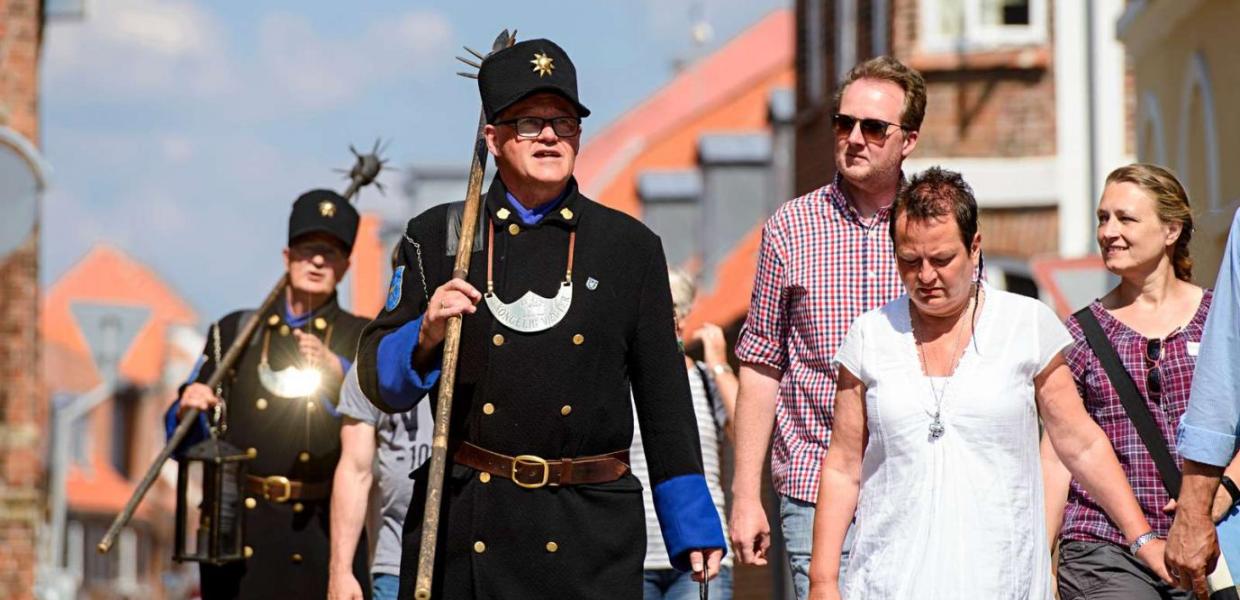
The old market town Ringkøbing
Ringkøbing, the oldest town in the area, is like a ”nice old lady” who greets her guests welcome with a big smile.
Ringkøbing is one of the best kept market towns in Denmark. In the old days, people travelled here from afar to trade livestock in the market square; today people come to experience this charming old town with stonepaved streets and beautiful houses; and, of course, to go shopping.
The 'Plesner' Town
A walk through Ringkøbing's old streets with views into the many cosy court-yards tells the story of a town with many merchant houses that gave off the scent of tobacco from distant countries, and where rope was produced in some local shops called ropewalks. You can imagine the lively traffic of horsedrawn wagons tumbling across the stonepaved roads, heading into town with grain, livestock, or other merchandise to be sold to the different merchants. The plaza is the old centre of Ringkøbing, with old historic houses and restored streets that lead to the harbor.
Ulrik Plesner
Many of Ringkøbing's beautiful, red-brick houses with tiled roofs were designed by the architect Ulrik Plesner, who was born on 17th May 1861 in the pastorage Vedersø Præstegård; the house that Kaj Munk, the poet-pastor who was executed in WWII, lived in years later. Plesner was a great influence on the architects of his time; many of his houses in Skagen and Copenhagen, and last but not least Ringkøbing, are still admired for their beauty.
An Influential Architect
Plesner was a productive and trend setting architect who in some ways rebelled against the extensive individualization and sentimentality that dominated architecture in the time of WWI. Plesner is from a generation of architects that had its roots in the prostetant environment and the simple building style with rows of red-brick houses with white cornices was a strong source of inspiration to the young Plesner.
Ringkøbing Harbour
Today, Ringkøbing's harbour is mostly used by yacht owners and fjord fishermen. The harbour front has been changed, so that the old houses lie back to back with modern buldings and the city hall. One of the old toll houses has been preserved and is beautifully situated in the north end of the harbour.

Photo:Presse
The Town Watchmen in Ringkøbing
The town watchman had the job of maintaining order in the town at night. He was usually armed with a mace when he walked through the streets singing town watchmen songs at the stroke of every hour. Today you can still follow the town watchmen in the streets of Ringkøbing.
The old custom of having the Town Watchmen, called Vægterne, patrol the streets of Ringkøbing was revived in Ringkøbing about 100 years after the Danish Town Watchmen Corps was repealed. The town watchmen guild in Ringkøbing was reinstated in 1975, and to begin with the town watchmen only walked around the town a few weeks every summer; later that turned into a couple of months each year. The guild has eight members today and they take turns walking the streets at night, singing their town watchmen songs during the summer.
A Song and a Drink
The past history of Ringkøbing becomes vivid, when you follow the town watchmen through the streets of Ringkøbing while they sing their ballads which tell people that its time to go to bed.
Often, the town watchmen also sing to the visitors at the local restaurants and pubs; they get rewarded with a drink, because the pubs in Ringkøbing take good care of the town watchmen. Sometimes they also sing in front of private homes, where the owners are ready to pour them a glass if the town watchmen sing a particular song or a lullabye to their children. The town watchmen guild 'Vægterlauget' always represents Ringkøbing at the European Town Watchmen Festival.

Photo:hvidesande.dk
The Shipyard and the Windmill Industri
Ringkøbing is the oldest town in the area. In 1443 it was pronounced a market town by the king; but it was to last more than a hundred years before the town prospered due to the livestock trade and an expanding fishing industry. Ringkøbing Amt was founded in 1794 and thereby Ringkøbing became Denmark's smallest county capital. Later, the shipyard was built and also the windmill industry came to town. Today, most of those businesses are closed, and the town is working hard to keep the ones that are left and to create new businesses.

Photo:Sven Piper